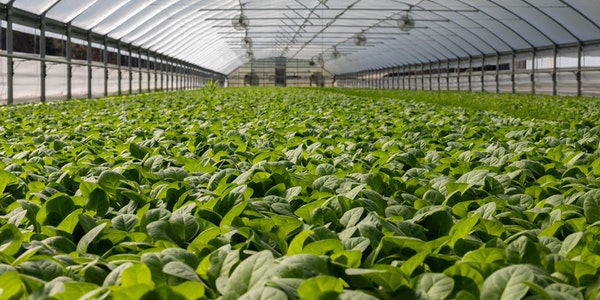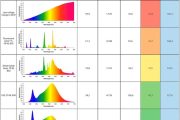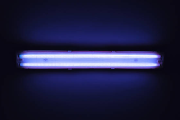The difference between LED grow lights and ordinary LED lights
-
Different wavelengths of light emission spectrum:
Plant growth lights are mainly red and blue components in the visible light du spectrum. Ordinary lights are just light-emitting diodes, and the spectrum is concentrated in the green part.
The LEDs used in the field of plant cultivation also exhibit the following characteristics: rich wavelength types, which coincide with the spectral range of plant photosynthesis and light morphology; the half-width of the spectral wave width is narrow, and the pure monochromatic light and compound spectrum can be combined as required; The light of a specific wavelength irradiates the crops in a balanced manner; it can not only regulate the flowering and fruiting of crops.
It can also control the plant height and plant nutrients; the system generates less heat and occupies a small space, and can be used in a multi-layer cultivation three-dimensional combination system to achieve low heat load and miniaturization of production space; in addition, its strong durability also reduces Operating costs.
-
The outside is different
LED is also called light-emitting diode. The core part is a wafer composed of P-type semiconductor and N-type semiconductor. There is a transition layer between P-type semiconductor and N-type semiconductor, which is called P-N junction. When the current flows from the LED anode to the cathode, the semiconductor crystal will emit light of different colors from purple to red. The intensity of the light is related to the current.
According to the luminous intensity and working current, it can be divided into ordinary brightness (luminous intensity <10mcd), high brightness (luminous intensity 10-100mcd) and ultra-high brightness (luminous intensity>100mcd). Its structure is mainly divided into four major blocks: the structure of the light distribution system, the structure of the heat dissipation system, the drive circuit and the mechanical/ protective structure.
Research on LED as supplementary lighting for plant photosynthesis. Traditional artificial light sources generate too much heat. If LED supplementary lighting and hydroponic systems are used, air can be recycled, and excess heat and water can be removed.
Electricity can be efficiently converted into effective photosynthetic radiation, and finally into plant matter. Studies have shown that the use of LED lighting can increase the growth rate and photosynthetic rate of lettuce by more than 20%, and it is feasible to use LEDs in plant factories.
-
Different uses
LED lamps can be used to replace spiral-type incandescent lamps or energy-saving bulbs, ranging from 5-40 watts, low-power thermal lamps to 60 watts (only about 7 watts of electricity are required).
LED plant lights help shorten the growth cycle of plants, because the light source of this kind of light is mainly composed of red and blue light sources, using the most sensitive light band of plants, red wavelengths use 620-630nm and 640-660nm, blue wavelengths use 450-460nm and 460-470nm.
These light sources are to make plants produce the best photosynthesis, and the plants get the best growth state. Experiments and practical applications have shown that in addition to supplementing the light during the lack of light, they also promote the growth of plants during the growth process. The differentiation of side branches and buds accelerates the growth of roots, stems and leaves, accelerates the synthesis of plant carbohydrates and vitamins, and shortens the growth cycle.
The difference between LED grow light and HPS lamp
There are many different types of grow lights that can be used for indoor gardening. The LED grow light uses a combination of red and blue LEDs. They are usually set on panels and placed near plants. You will see HID high-intensity gas discharge lamps MH, metal halide lamps and high-pressure sodium lamps, advertising lamps used in greenhouses and the growth of all types of indoor plants. LED grow lights are also available and provide a better solution for indoor plant lighting than before.
- Using LED grow lights, the plant growth speed is faster than using HPS. Various studies have shown that LED plant growth lights are an excellent technology that can make plants grow better and faster. For example, the Department of Horticultural Sciences at the University of Minnesota in the United States conducted a study comparing high-pressure sodium lamps with LED growth lamps. They measured the growth of plants under the two types of lamps in the two factories with an average crop height of more than seven inches. The growth of crops when using LED lights was much higher than that when using HPS lights.
- The lamp cost is lower. Compared with HPS lamps, although the initial purchase price of LED lamps is often more expensive, there is a big price difference, which is the material and technical cost of different growth lamps. LED grow lights have only one-eighth of the power consumption of HPS lights, but they can produce the same amount of light. During the entire life cycle of the crop, LED grow lights save you more money. The tiny LED diodes can also be flexibly configured, which can provide a more luminous growth lamp than traditional manufacturers.
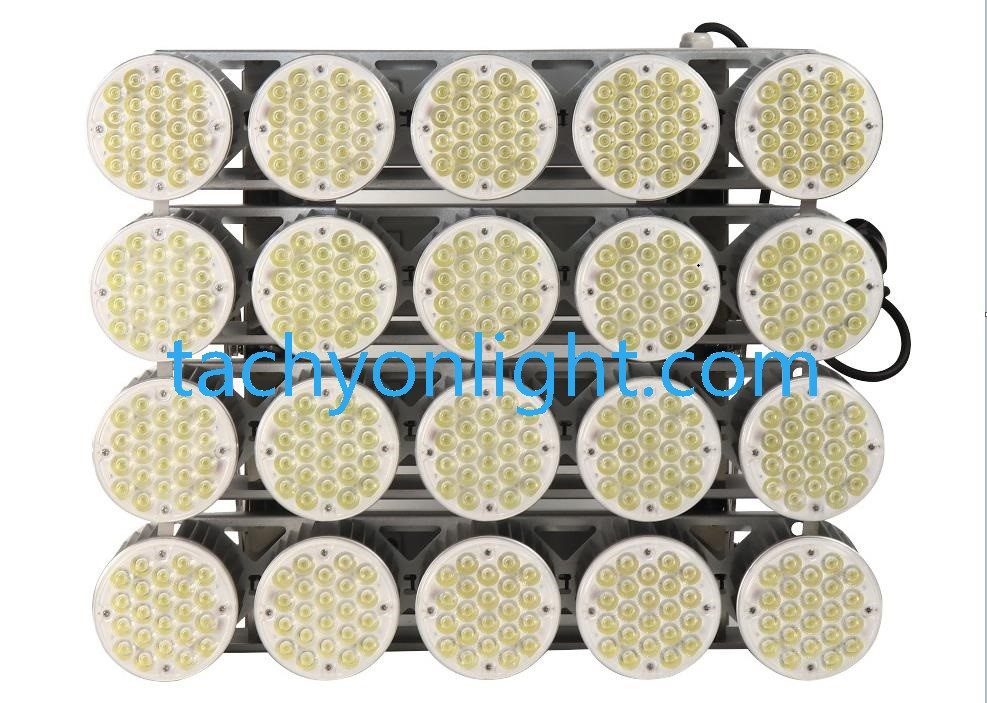
- The weight of the lamp body is getting lighter and lighter. Compared with HID and high pressure sodium lamps, LED growth lamps are lighter in weight and consume less materials than other types of traditional lamps. This is because HID, MH and HPS lamps all need to use ballasts so that they can emit light normally. Since the lights are usually hung on the top of the plants in some way, weight is an important consideration, especially when the lights must be cleaned regularly and the maintenance frequency of the plants, such as watering, etc., and an appropriate distance from the crop to the light . Some high-end LED plant growth lamps, built-in fans, equipped with air-cooled reflectors and some necessary heat dissipation pipes, etc., will reduce the temperature of the lamps to a certain extent.
- Ability to change light quality. For plants to grow well, certain spectra have important effects on different stages of plant growth. Seedlings need more blue light to grow. Under blue light, the stems of crops are very strong. When the crop reaches the maturity stage, it needs the red and orange spectrum of the light, which HPS lamps can provide. You can find an HPS bulb that faces the blue or red spectrum, but it does not have the ability to provide multiple spectrums at the same time. This means you will need to use multiple growth lights, and then you will need to switch between different lights according to the growth stage of the crop.
All of this is simple, when you use the LED grow light, it will produce red and blue spectrum. More high-quality LED plant growth lights use the knob, just turn on to change the light spectrum. If you can afford LED grow lights, that is a better choice. Compared to any high-pressure sodium lamp or metal halide lamp, your plants will grow faster, taller and longer.
Which yields more HPS or LEDs
Light is a key limiting factor affecting plant growth. It is not only an essential environmental factor for green plants to successfully complete their life cycle, but also an energy source for plant photosynthesis, and it is an important environmental signal that regulates plant physiological activities. With the rapid development of greenhouse cultivation, indoor cultivation, and plant factory technology, scientists have intensified their research on agricultural lighting. At present, the light sources used in plant facility cultivation mainly include incandescent lamps, fluorescent lamps, metal halide lamps, high pressure sodium lamps (HPS) and light-emitting diodes (LEDs).
The light-emitting principle of HPS
Sodium lamps are divided into low-pressure sodium lamps and high-pressure sodium lamps. The discharge radiation of the low-pressure sodium lamp is concentrated on two double D spectral lines of 589.0 and 589.6 nm. These two lines are very close to the highest value of the human visual curve (555 nm), and the luminous efficiency is very high. However, low-pressure sodium lamps have too strong monochromaticity, poor color rendering, and too long discharge tubes. In response to these shortcomings, scientific researchers invented HPS in 1961.
The arc tube is a key component of HPS. It is made of polycrystalline alumina and ceramic tubes that are resistant to high temperature and sodium vapor corrosion. The wick uses a metal bracket to fix the arc tube and getter ring on the stem. The two end electrodes of the arc tube are respectively Connected with 2 inner guide wires on the stem.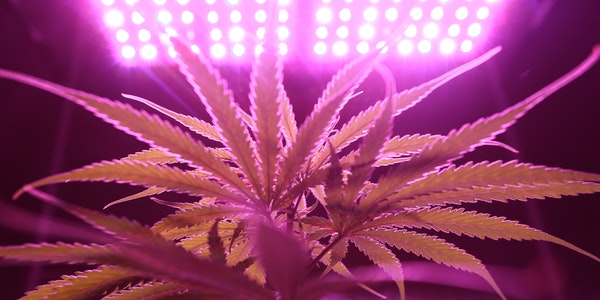
The glass bulb is made of high-temperature resistant hard glass. The bell mouth of the glass bulb and the wick is sealed by high-temperature flame, and the inside is vacuumed or filled with inert gas. After the bulb is started, an arc is generated between the two end electrodes of the arc tube. Due to the high temperature of the arc, the mercury and sodium in the tube are heated and vaporized into gaseous mercury and gaseous sodium. The electrons emitted by the cathode hit the discharge material during the process of moving toward the anode. The atom gains energy to produce ionization or excitation, and then return from the excited state to the ground state or from the ionized state to the excited state, and then return to the ground state, infinitely looping. At this time, the excess energy is released in the form of light radiation, which produces Light.
HPS needs to match ballasts, which are divided into inductive ballasts and electronic ballasts. HPSs of different powers should be used with corresponding ballasts. Inductive HPS needs to be used with inductive ballasts, starters, bulbs, lamp holders, and lampshades[2]. The spectral energy distribution of HPS is roughly 39%-40% for red and orange light, 51%-34% for green and yellow light, and 9% for blue and violet light. The HPS spectrum contains more red-orange light, has a high red/far-red light (R/FR) ratio, less blue-violet light content, and higher light supplement efficiency. The life span can reach 20 000~24 000 h. HPS needs to be used with reflectors or reflectors, and is a commonly used artificial light source in greenhouses.
The light-emitting principle of LED lights
In 1962, the American physicist Nick Holonyak invented the LED, which is a solid-state semiconductor light-emitting device with two electrodes made of III-IV compounds. It can directly convert electrical energy into light energy. The basic principle of light emission is Use semiconductor PN junction or similar structure to convert electrical energy into light energy. The wavelength of the LED light is determined by the material of the P-N junction. Different materials have different band gaps. When the current flows from the LED anode to the cathode, the semiconductor crystal will emit light of different colors from purple to red. The intensity of light is related to the magnitude of the current. The greater the energy between electrons and holes, the higher the energy of photons. The energy of photons corresponds to the color of light. In the spectrum of visible light, blue light and purple light carry The energy of orange light and red light is the least.
The core component of the LED is a semiconductor chip. The two ends of the chip are respectively attached to a support and connected to the positive and negative poles of the power supply. The entire chip is encapsulated by epoxy resin. The semiconductor wafer consists of two parts, one part is a P-type semiconductor, in which holes dominate, and the other end is an N-type semiconductor, mainly electrons. When these two kinds of semiconductors are connected, a PN junction is formed between them. When the current is applied to the chip through the wire, the electrons will be pushed to the P area. In the P area, the electrons and holes recombine, and the excess energy is Released in the form of photons, thereby directly converting electrical energy into light energy.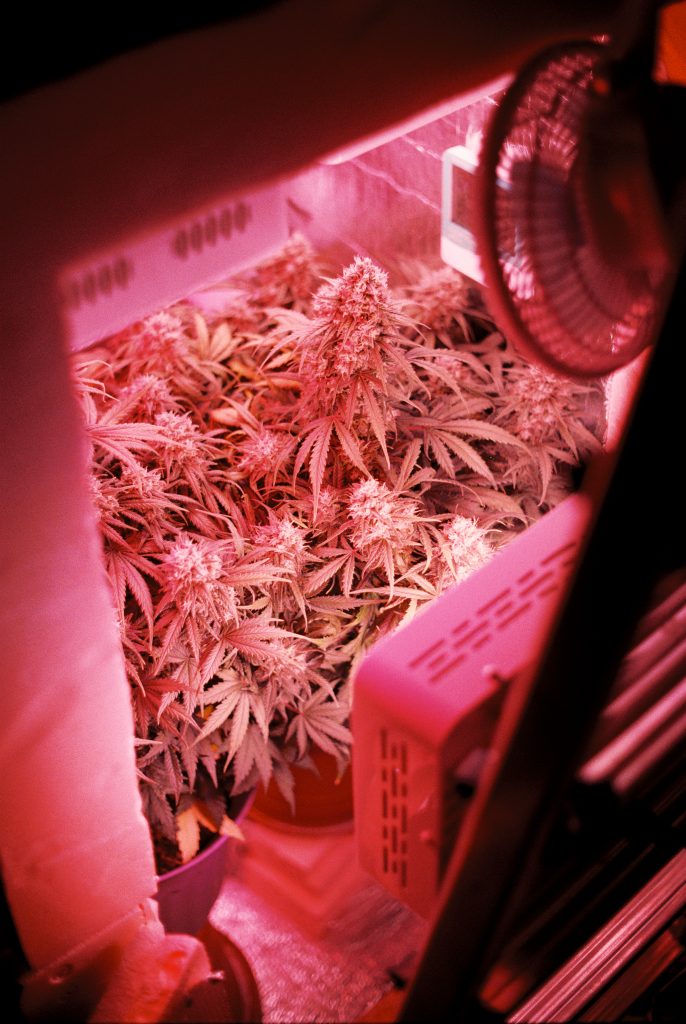
When LED first came out, its radiation intensity was low, and the color variety was small, so it was limited to marking and viewing purposes. High-brightness LEDs began to appear in the mid-1980s, and it was not until the emergence of high-brightness blue LEDs in 1993 that full-color LED products were realized, and their applications were also extended to automobiles, communication products, information products, traffic signals, and lighting. And biological agriculture and other fields.
Disadvantages of HPS
With the development of lighting fixtures and the improvement and promotion of LED lights, HPS gradually showed some deficiencies. First of all, the HPS light source belongs to omnidirectional light. More than 50% of the light needs to be reflected by the reflector to illuminate the ground. In this process, some light will inevitably be lost, and the illuminance within the illumination range is uneven. At the intersection of the lamps, the illuminance only reaches about 40% of the direct illumination direction.
Secondly, the lighting continuity of sodium lamps is very poor. In theory, the HPS life span can reach 24 000 h. However, due to the influence of grid voltage fluctuations and the operating environment, its life span is far from reaching the theoretical life expectancy. 60%. Although it is possible to reduce this loss by using light energy savers to adjust voltage and energy, improve power factor, reduce line loss, and adjust the light-on and light-off time in time, this kind of defect cannot be eliminated fundamentally.
Furthermore, HPS uses mercury vapor to emit light. After the light source is discarded, if it cannot be effectively treated, it will inevitably cause environmental pollution. In addition, the color temperature of HPS is 2 000 to 3 000 K, and the color rendering index is 20 to 25. The main emission spectrum of traditional HPS is concentrated in the range of 560 to 640 nm, which is not in good agreement with the effective radiation spectrum in plant photosynthesis. Moreover, in HPS, the light distribution curve needs to be determined by the reflector, so there are great limitations.
Advantages of LED
LED belongs to the category of non-hazardous lamps. Different from traditional light sources, LED lights are light sources that emit light in half space, and the utilization rate of light is higher than HPS. It has the following advantages:
(1) As a semiconductor component, in theory, the effective service life of LED lamps can reach 50,000 h, and the effective service life of HPS can reach 20,000 h. Frequent switching has little effect on the life of the LED lamp. The LED lamp contains no mercury and no harmful substances to the human body. It is a green and environmentally friendly light source.
(2) The color temperature of white light LED is 3 000~10 000 K, and the color rendering index is 60~95. Compared with HPS, the color rendering index of most LED lamps can reach more than 80%, which can well restore the actual color of the object. , Quite close to natural light.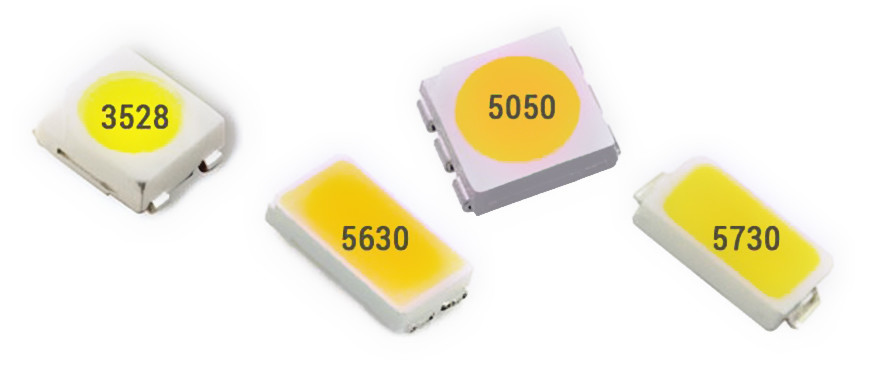
(3) The LED light can reach the best light level at the moment it is turned on, and there is no so-called start-up time. Therefore, the LED light has a more complete automatic control system, which can adjust the brightness of the light according to different time periods and lighting conditions. Corresponding adjustments can achieve a good energy saving effect [7].
(4) Theoretically, the energy consumption of white LED lamps is only 3/5 of HPS. In agricultural lighting, the same output can be obtained by using only 75% of the energy consumption of HPS. Using HPS to fill light in a greenhouse requires 1 224 kW·h, while using LED lights to fill light requires only 294 kW·h.
(5) From the analysis of the optical system, the LED lamp emits light in one direction, and the light can be oriented directly, so the light energy utilization rate is relatively high. At the same time, LED adopts distributed light source. Through the effective design of each electric light source, the light source of the lamp can present an ideal state, realize the reasonable adjustment of the light distribution curve, and control the light distribution. Within the effective illumination range of the lamp, the illuminance is relatively More uniform. LED is a cold light source with low heat radiation, which can be used for multi-layer three-dimensional cultivation system to irradiate plants at close range, so that both light energy and space utilization are effectively improved, and costs are greatly reduced.
(6) LED transportation and installation are convenient. The LED lamp chip is small in size, solid-state package, and has good shock resistance. It can be installed in any miniature and enclosed equipment without worrying about vibration; it can be made into various types of lamps, which is helpful to the miniaturization and specialization of lamps. The plug-in LED lamp is basically a small LED lamp bead, which is encapsulated in epoxy resin. It is very small and very light, and the SMD LED lamp is even smaller.
(7) The light density of the LED is easy to adjust, the light output of the lamp is proportional to the working current, the illuminance can be adjusted by increasing or decreasing the current, and the pulse width can also be adjusted by adjusting the duty cycle of the voltage and the working frequency , Adjust the luminous intensity of LED lights.
(8) LED can be used as an insect trap light board. The color of the LED trap light board includes yellow, green, blue, red, and it is covered with a high-voltage power grid like an electric mosquito swatter for trapping and killing insects. Studies have shown that white LED light boards have the best effect on trapping insects, followed by blue and green LED light boards, yellow LED light boards again, and red LED light boards the worst effect.

